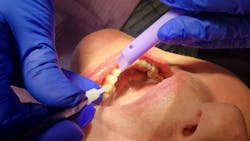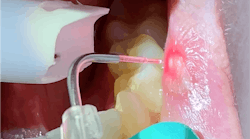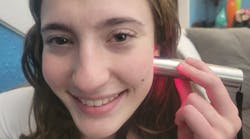How can dental hygienists identify possible laser procedures for dentists?
What you’ll learn in this article
- How dental lasers assist with hemostasis, reducing bleeding and promoting faster healing after extractions or soft tissue procedures
- When and why lasers are used for gingivectomy to manage gingival hyperplasia or gain restorative access
- The role hygienists play in identifying mucoceles, fibromas, and abnormal frenums that may require laser treatment
- How laser-assisted gingival troughing and tissue recontouring enhance restorative precision and esthetic outcomes
Disclaimer: Please remember that these procedures are dentist-only procedures unless otherwise noted and can only be completed by a licensed dentist.
When we have patients in our dental chair, we have the chance to do so much more than just “clean their teeth.” Along with looking at all the things we do for dental hygiene, it’s important for our dentists to recognize what they can use the dental laser for on their patients too.
Here are a few procedures that doctors can use a laser for, and we need to watch for these things.
Hemostasis
Many procedures we do can cause tissue trauma, and there are areas where we need to help control the bleeding. Hemostasis is a procedure that is very easy for the laser to accomplish. Diode lasers can be used after extractions to help control the bleeding and create the blood clot to begin the healing process. But we can also use lasers for excessively bleeding gums or after other procedures.
Gingivectomy
When we have very bulbous tissue and it’s more than what we can do as hygienists with decontamination, this is a perfect opportunity for the dentist to use the laser to trim back the tissue. This can be done when we have gingival hyperplasia as well as just minimizing the tissue. Our doctors can also use it to gain access to class V fillings.
Mucocele
A mucocele is lump under the tissue that is impinging on appearance or function that makes it interfere with speaking. The laser can be used to open the tissue (from the inside of the mouth), find the mucocele underneath, and remove the areas of concern. The laser can then be used to “melt” the tissue back together.
Gingival troughing
To use the laser in a bloodless site allows the dentist to trough the tissue and be able to have margins that are very clean. This is a big reason why doctors buy lasers. Gingival troughing along with digital impressions makes a great combination.
Fibroma removal
If there are nodules on the inside of your patient’s cheek or on the tongue, your doctor can use the laser to remove them. The hemostasis that is created when these nodules are removed makes them have a faster healing response. Remember to always send fibromas to an oral pathologist for a biopsy.
Frenectomy
Frenums can be removed for various reasons. From a lingual frenum for a tongue-tie to a labial frenum on upper centrals for orthodontics to areas that have recession and are pulling on the tissue, lasers can easily release the tissue. This is a huge benefit as opposed to cutting or clipping the frenum, and it makes healing so much easier and faster.
Tissue recontouring
Many times, we see uneven tissue around teeth that creates an unpleasant appearance for the patient’s smile. A laser can be used to make this tissue balanced and even create a smile that patients love to share. Remember as a dentist to always sound to bone first before making any incisions into the tissue.
Hard-tissue lasers
If your dentist has a hard-tissue laser, they can use it to remove tooth structure or bone as needed. These lasers require more training and can be used for several procedures, such as cutting teeth, helping an impacted tooth get through the bone, and removing tori, just to name a few.
Summary
All these procedures along with many more are what we as dental hygienists need to watch for when we are working with our patients. This not only helps us in our hygiene chairs but also provides opportunities for our patients to have other procedures completed with the laser.
Every day, we will have opportunities to discuss the use of lasers with our patients and share with them the other things lasers can be used for in a dental scenario. Take the time to look for them.
Editor’s note: This article first appeared in Clinical Insights newsletter, a publication of the Endeavor Business Media Dental Group. Read more articles and subscribe.
About the Author
Angie Wallace, RDH
Angie Wallace, RDH, has been a clinical hygienist for more than 35 years. She is a member of the Academy of Laser Dentistry (ALD), where she obtained her advanced level proficiency, educator status, Recognized Course Provider status, and mastership. Angie is the chair for education on the ALD Board of Directors and serves on both the Regulatory Affairs and Auxiliary committees. She has a laser education consulting company, Laser Hygiene, LLC, and has been recognized as a worldwide speaker. Contact her at [email protected].



